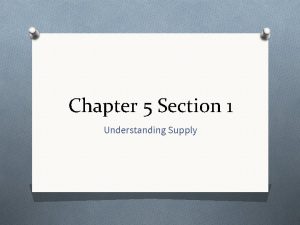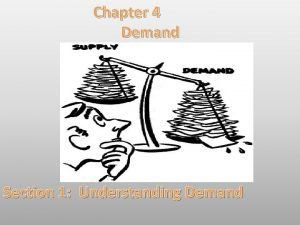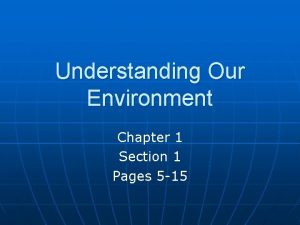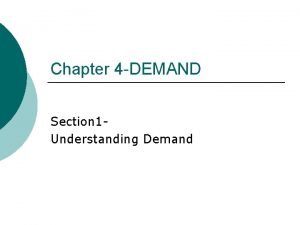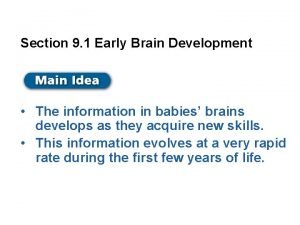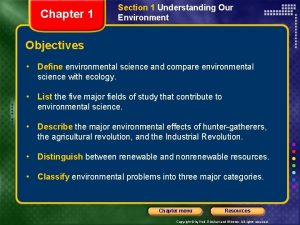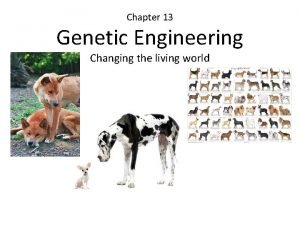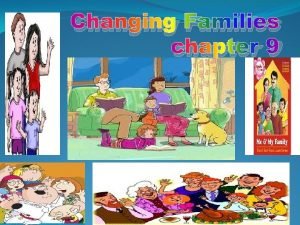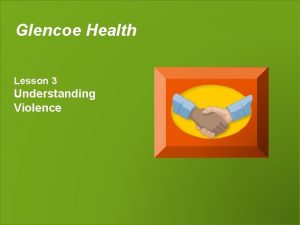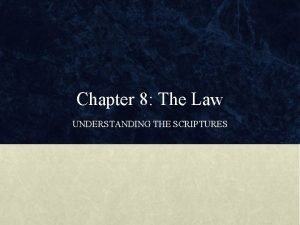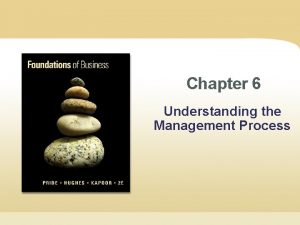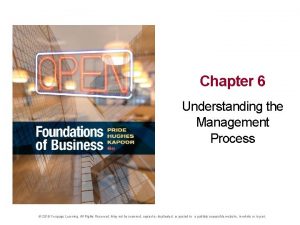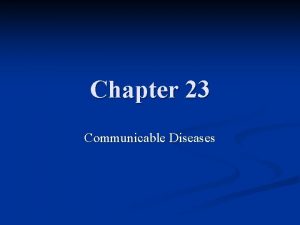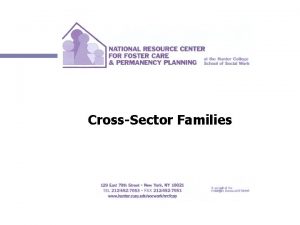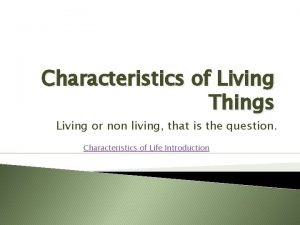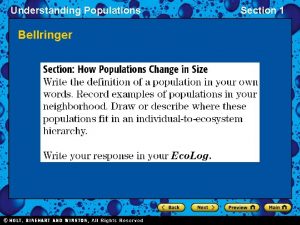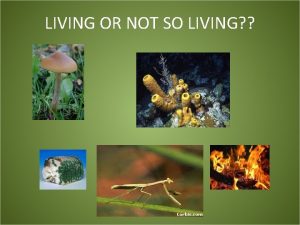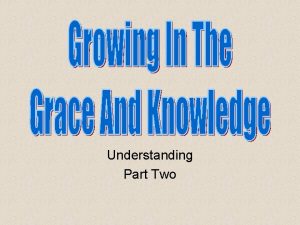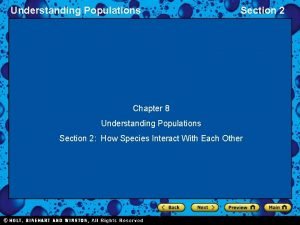Living in Families CHAPTER 2 Understanding Families SECTION





















- Slides: 21

Living in Families CHAPTER 2

Understanding Families SECTION ONE

Importance of Families �Family—group of 2 or more people who care about one another and are committed to one another Usually live together Related by marriage, birth, or adoption

Types of Families �Many different forms �Vary in size and structure �Four main types

Nuclear Family �Family group with 2 generations—a father and mother and at least one child—sharing the same household �Can contain adopted children/foster children Adoption—legal process in which people obtain the permanent right to raise a child who is not biologically their own Foster child—a child whose parents or other close family member s are unable to care for him/her

Extended Family �Family group that included relatives other than parents and children within a single household �Can refer to relatives outside the household— cousins, aunts, uncles, grandparents, and greatgrandparents

Single-Parent Family �Family group that consists of one parents and one or more children sharing a household Parent can be either mother or father Puts many demands on the parent

Blended Family �Family group that consists of a married couple and at least one child from a parents previous relationship Often called step-family

The Family Life Cycle �Each family goes through the family life cycle—a series of stages in a predictable order BEGINNING STAGE � Couple works to establish a home and a marriage relationship CHILDBEARING STAGE � Couple prepares and adjusts to parenthood CHILD-REARING STAGE � Children grow and parents work to meet their children’s changing needs and help them develop independence LAUNCHING STAGE � Children gradually leave home to support themselves. Parents help their children adapt to life on their own

The Family Life Cycle EMPTY-NEST STAGE � After the last child has left home, the couple renews their relationships and adjusts to the change in their parenting role RETIREMENT STAGE � Couple adjusts to the aging process, they may develop new interests or renew old ones �Variations in the family life cycle Single adulthood Single parenthood Divorce Remarriage Couples with children Adult children moving back in with parents

Trends Affecting Family Systems �Changing Family Roles �Mobile Society �Awareness of Family Values

The Need for Healthy Families �A family provides each member with protection, economic support, emotional support, a sense of identity and acceptance, and opportunities for healthy development.

How Families Can Be Strengthened �Commitment—pledge or promise of loyalty �Time Together �Communication �Appreciation �Shared Beliefs �Coping Skills Techniques that help people solve a problem or adapt to a situation

Considerations of Parenthood SECTION 2

Parenthood Brings Changes �Any person who becomes a mother or father or a biological or an adopted child enter into parenthood—the state of being a parent Having a child brings dramatic and long-lasting changes to every parents life Re quires knowing and understanding and child’s needs and meeting those needs Being a parent is one of the most important roles a person will have in life!

Decisions about Parenthood �Emotional maturity-- being responsible enough to consistently put someone else’s needs before your own �Health Considerations Higher rates of birth defects among children born to older mothers �Financial Concerns Very expensive—must pay for clothes, health care, food, equipment, and other expenses �Parenting Skills Can take classes, read books, etc

Stages of Parenthood Stage Time Period Parents’ Task Image-Making Pregnancy • Begin to imagine themselves as parents Nurturing Birth-Age 2 • Become emotionally attached to the child • May question relative worth of other priorities Authority Age 2 -Ages 4 to 5 • Determine rules • Clarify role as authority figure Interpretive Ages 4 -5 to Age 13 • Rethink their role as parents • Decide what knowledge, skills, and values the child needs Interdependent Adolescence • Establish boundaries • Find disciplinary methods appropriate for teens Departure Child Leaves Home • Evaluate their parenting

Parenting Responsibilities and Rewards �New Responsibilities Lifestyle Changes � Less time to spend with friends Emotional Adjustments � Fear, Relationship Changes � New parents don’t have as much time for each other Employment Adjustments � Stop frustration, worry, jealously, depression working, cut back on hours, must miss for child’s sickness Legal Responsibilities � Legally responsibly for providing food, shelter, clothing, medical care, education, and legal help

Parenting Styles �How parents and other caregivers care for and discipline children No one style in considered right No one style works best with all children Three main styles:

�Authoritarian Believes children should obey their parents without question Respond quickly and firmly when rules are broken �Assertive-Democratic Children have more input into the rules/limits of the home Children are given a certain amount of independence and freedom of choice within the rules Believe children learn best from accepting the results of their actions or by problem solving together to find an acceptable punishment

�Permissive Parents give children a wide range of freedom Children set their own rules, encouraged to think for themselves and not follow trends Parents typically ignore rule breaking
 Little families
Little families Understanding supply section 1
Understanding supply section 1 Lesson 1: understanding demand
Lesson 1: understanding demand Chapter 1 section 1 understanding our environment answers
Chapter 1 section 1 understanding our environment answers Economics chapter 4 section 1 understanding demand answers
Economics chapter 4 section 1 understanding demand answers Blue things
Blue things Is tomato living or nonliving
Is tomato living or nonliving Living non living dead
Living non living dead Smallest living unit of life
Smallest living unit of life Understanding brain structure section 9-1
Understanding brain structure section 9-1 Section 19-1 understanding populations answer key
Section 19-1 understanding populations answer key Section 1 understanding our environment answer key
Section 1 understanding our environment answer key Chapter 10 section 1: meiosis
Chapter 10 section 1: meiosis Genetic engineering
Genetic engineering Changing families
Changing families Chapter 9 voices and instrument families
Chapter 9 voices and instrument families Chapter 7 lesson 3 help for families
Chapter 7 lesson 3 help for families Chapter 9 lesson 3 understanding violence
Chapter 9 lesson 3 understanding violence Understanding the scriptures chapter 24 study questions
Understanding the scriptures chapter 24 study questions Chapter 6 understanding the management process
Chapter 6 understanding the management process Chapter 6 understanding the management process
Chapter 6 understanding the management process Chapter 23 communicable diseases
Chapter 23 communicable diseases

